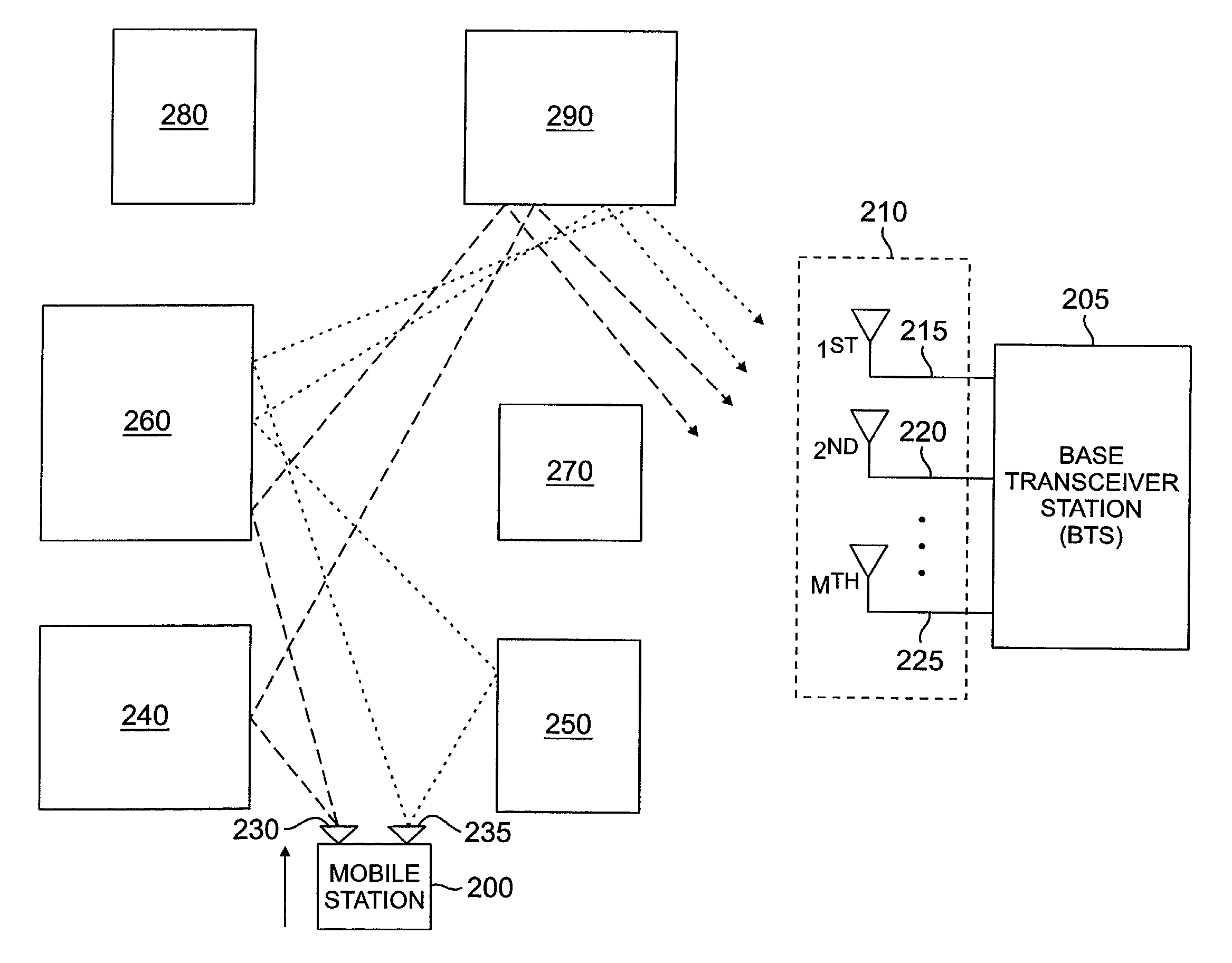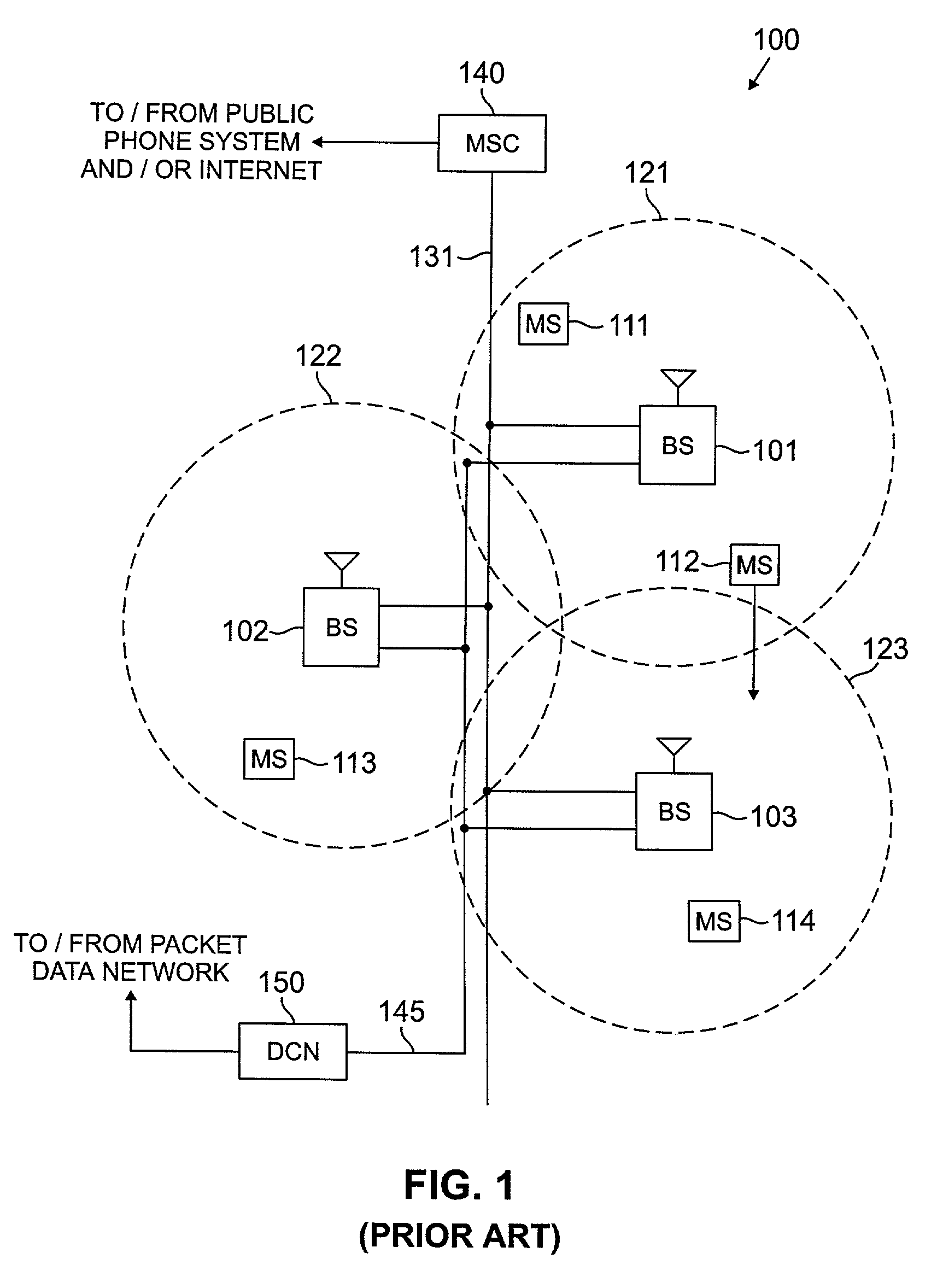System and method for improving performance of an adaptive antenna array in a vehicular environment
- Summary
- Abstract
- Description
- Claims
- Application Information
AI Technical Summary
Benefits of technology
Problems solved by technology
Method used
Image
Examples
Embodiment Construction
[0029]FIGS. 1 through 5, discussed below, and the various embodiments used to describe the principles of the present invention in this patent document are by way of illustration only and should not be construed in any way to limit the scope of the invention. Those skilled in the art will understand that the principles of the present invention may be implemented in any suitably arranged wireless network.
[0030]FIG. 1 illustrates a general overview of an exemplary wireless network 100. The wireless telephone network 100 comprises a plurality of cell sites 121–123, each containing one of the base stations, BS 101, BS 102, or BS 103. Base stations 101–103 are operable to communicate with a plurality of mobile stations (MS) 111–114. Mobile stations 111–114 may be any suitable wireless communication devices, including conventional cellular telephones, PCS handsets, portable computers, telemetry devices, and the like, which are capable of communicating with the base stations via wireless li...
PUM
 Login to View More
Login to View More Abstract
Description
Claims
Application Information
 Login to View More
Login to View More - R&D
- Intellectual Property
- Life Sciences
- Materials
- Tech Scout
- Unparalleled Data Quality
- Higher Quality Content
- 60% Fewer Hallucinations
Browse by: Latest US Patents, China's latest patents, Technical Efficacy Thesaurus, Application Domain, Technology Topic, Popular Technical Reports.
© 2025 PatSnap. All rights reserved.Legal|Privacy policy|Modern Slavery Act Transparency Statement|Sitemap|About US| Contact US: help@patsnap.com



